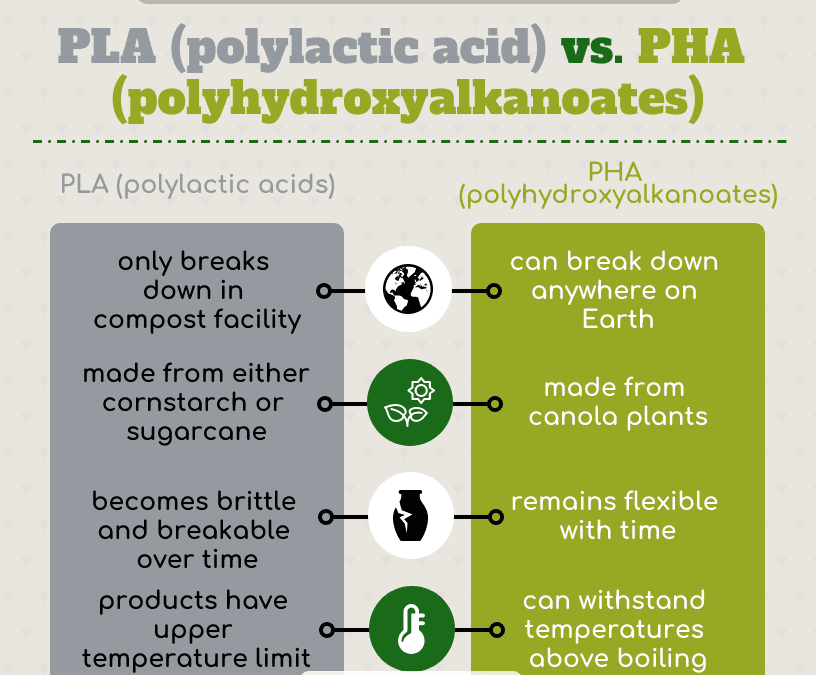Recent News and Updates
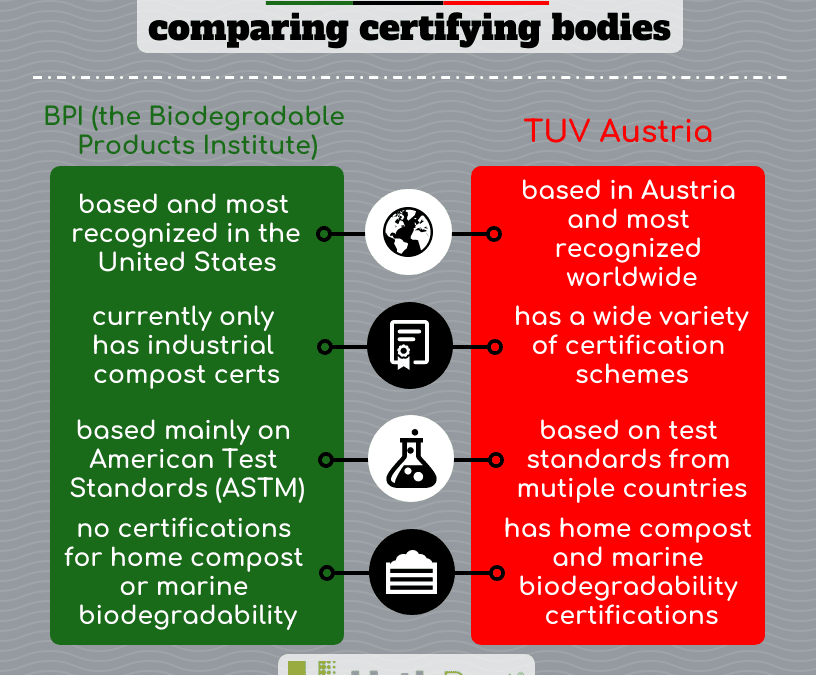
BPI vs. TUV
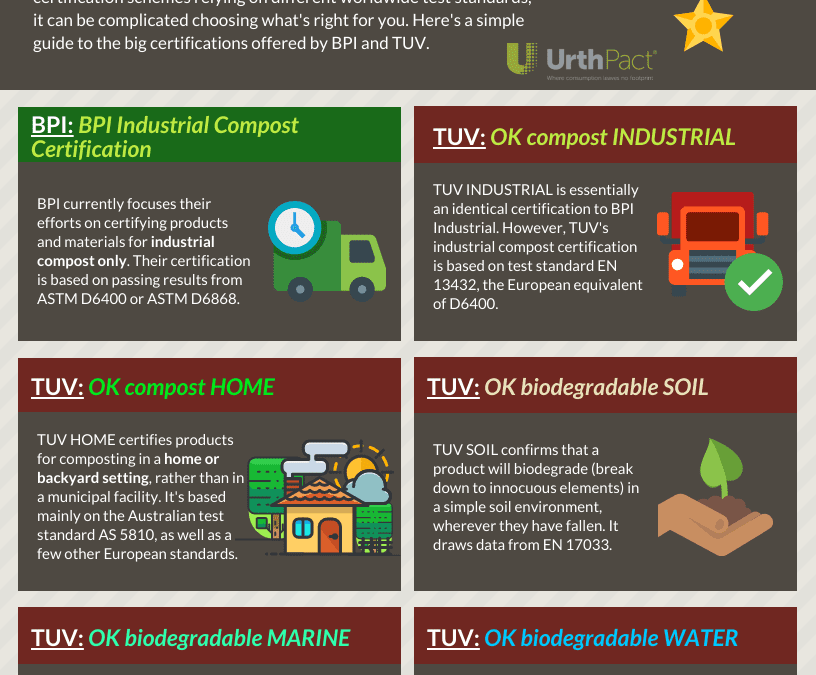
BPI vs. TUV Cert Schemes
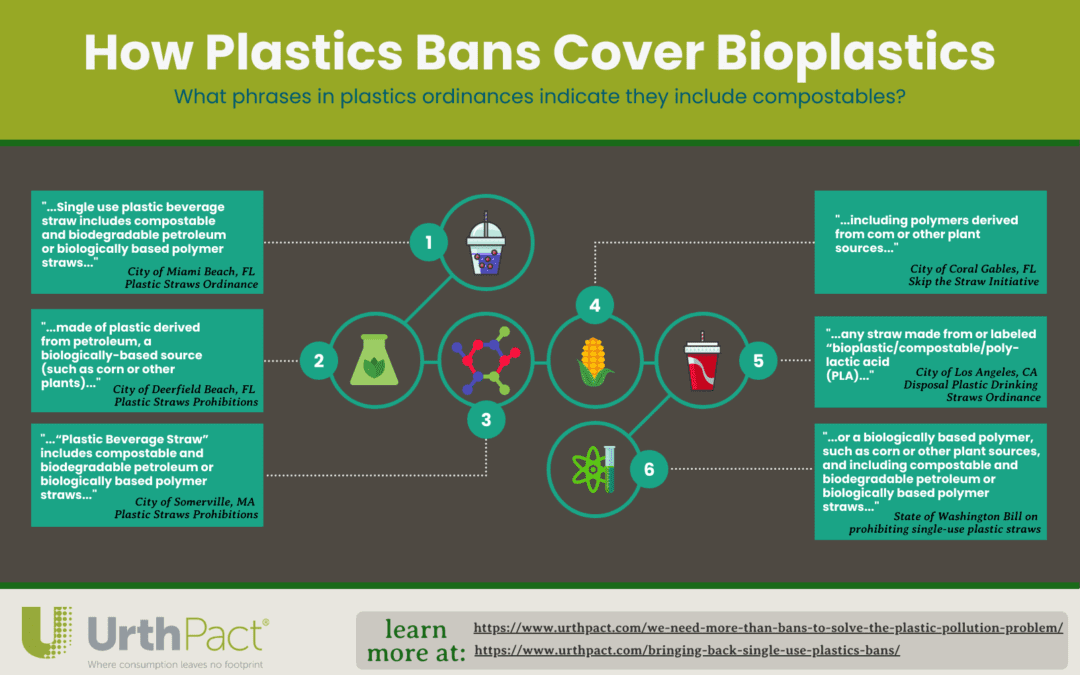
Phrases In Bans that Cover Bioplastics
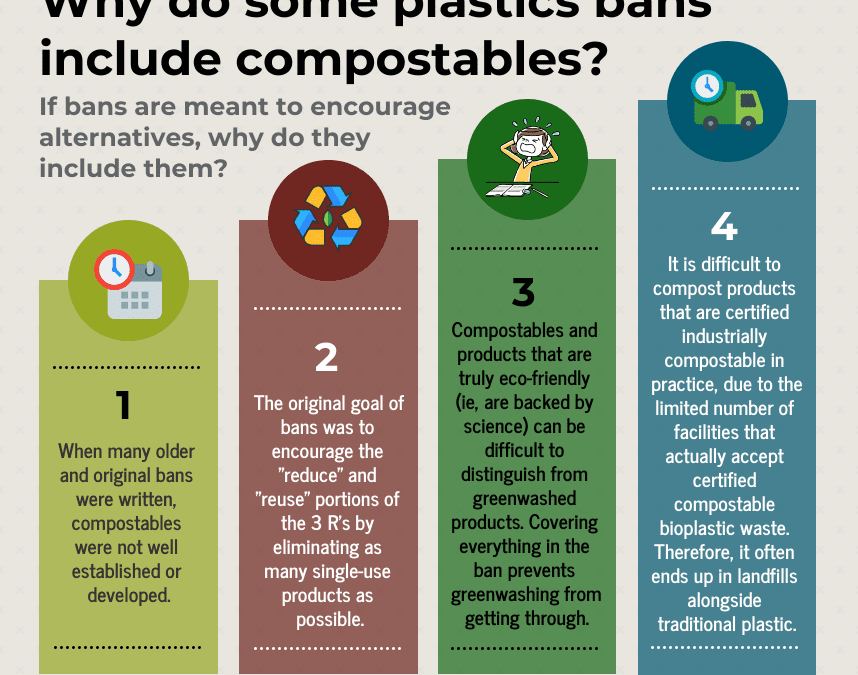
Why Bans Cover Bioplastics

Why Plastics Bans Should NOT Include Compostable Bioplastics
As plastic pollution becomes more and more visible to consumers and everyday citizens, cities, states and countries have been enacting plastic bans. As we begin to recognize the problems caused by traditional, petroleum-based single-use products, we have started searching for viable solutions. One such solution was to simply ban products made from those materials. And while this is a great idea in practice, the umbrella-like nature of these types of bans tends to ban the solution as well as the problem. Many single-use plastics bans also cover products made from compostable bioplastic materials, especially when it comes to drinking straws. Plastic straws are an easy item to simply ban and get rid of, or look to replace with less-than-useful and less-than-enjoyable alternatives like paper or hay. But the reality of the situation is we need a solution that satisfies customers and the planet, and right now bans are preventing that solution from coming to fruition.
So why are some plastics bans covering compostables? They are plastics bans, aren’t they? Well originally, these bans were written before bioplastics were well-established and the resources and knowledge just weren’t there to inform legislators that this wasn’t something that should be included in bans. Odds are, lawmakers were trying to get bio-based materials that are in no way compostable or biodegradable banned, and in the process covered compostables as well. Many states also want to eliminate as many opportunities for greenwashing as possible, so by covering all bioplastics, they no longer have to be concerned with what’s greenwashed and what’s actually planet-friendly. But the biggest reason bioplastics are covered in plastic bans is because of industrially compostable bioplastics. When most of these bans were written, PLA (polylactic acid) was the only well-known and widely-utilized bioplastic. PLA products have to be transported to compost facilities that can properly compost them to get their environmental benefits; they have no benefits if they end up in landfills. Because many communities did not have these types of composters, it simply became easier to ban PLA rather than sort it out of the recycling stream.
So what language should you look for in your local legislation to determine if it covers compostable bioplastics? Well, phrases like “biologically-based polymer” (City of Miami Beach, FL) or “biologically-based source (such as corn or other plants)” (City of Deerfield Beach, FL) are both phrases used to target PLA and other industrially compostable materials directly, as they are made from cornstarch or sugarcane bases. Some bans call out PLA directly, like Los Angeles: “any straws made from a bioplastic/compostable/polylactic acid (PLA).” Others just make sure to cover all “compostable and biodegradable petroleum or biologically-based polymer straws” (State of Washington) with a cover-all phrase. While these bans are all very well-intentioned, they need revisions to allow certified compostable materials and products to help bring about the solution to the single-use plastics problem.
We’re not against single-use plastics bans. We actually want to encourage more states, cities, and the federal government to implement more bans on products made from traditional, petroleum-based materials. However, we want to make sure that the new bans coming into play keep compostable bioplastics OUT of their coverage, and that the ordinances currently in place that do include bioplastics consider a revision. A great example is the City of Charleston, SC’s plastic straw ordinance and styrofoam ban; they ban materials and products based on ASTM test standards D6400 and D6868, as well as BPI certification for industrial compostability. Bans like this that are based on scientific compostability test standards and certifications are the best of their kind, because they eliminate greenwashing, and promote the use of compostable alternatives to traditional plastics. So let’s take a page from Charleston’s book and get our plastics bans on the right page…the compostable page.
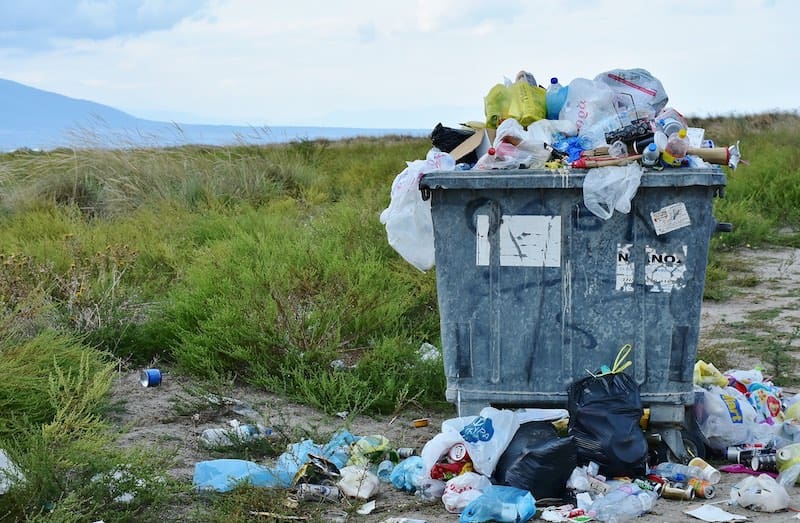
From Pollution to Solution: How Compostable Bioplastics Are Shaping Our Future
Straws, bottles, bags, cutlery, wrappers…what do they all have in common? Well, first of all, most of these are single-use products, meaning they’re meant to be used a single time and then thrown away. This may be for sanitary reasons (who wants to use a plastic straw twice?), or for realistic reasons (a restaurant can’t efficiently and thoroughly clean 500 reusable straws multiple times a day). On top of being single-use products, many of these products are also made from petroleum-based plastic materials. While some of these materials are better than others (ex: polyethylene (PE), which is often used in water bottles, is much more recyclable than polystyrene, or styrofoam (PS)), the overall environmental impact of utilizing a single-use petroleum-based plastic product is immense. So why not simply switch everything to reusables? Well, realistically, we do want and need single-use products to function as a society. How do we package granola bars without disposable wrappers? How do we get McDonald’s take-out without a container for our fries and a sealed container for our sauce? We can say over and over that we should just get rid of single-usage, but that’s not really the problem here. The problem is that we chose a material that had originally been designed to last forever, and used it to make single-use products.
The Rise of Compostable Bioplastics as a Sustainable Alternative
Petroleum-based plastics first originated and were invented in the mid-1800s. These novel materials, as they continued to be developed, were not only extremely cheap to produce, but were functional and very durable. This released mankind from having to make tools and other necessities from natural resources like stone or wood or glass. These materials started out being used for products that were built to last: billiard balls, combs, and other decorative pieces. As the 1940s rolled around, injection-molding of plastics had become commonplace, and we were starting to produce a wide variety of products from plastic materials, everything from radio components to car parts. During this time, two families of plastic materials emerged: thermoset plastics which couldn’t be recycled due to the irreversible nature of their chemical bonds, and thermoplastics, which could easily be melted down and formed into new products. As these materials became more industrialized, they also became cheaper to produce. This led to many product lines being converted from more natural materials over to plastics. By the turn of the 21st century, nearly every single product utilized in a day’s span had some kind of plastic component.
Fast forward to the present day. The US alone creates over 35 million metric tons of plastic waste a year. Humans dump anywhere from 4 million to 12 million metric tons of plastic waste into the oceans each year. Clearly, we created a huge problem when we thought we were implementing a solution. And most of that waste is single-use products. The top 5 items found during the Ocean Conservancy’s International Coastal Cleanup in 2020 were food wrappers, cigarette butts, plastic bottles, plastic bottle caps, and plastic straws and stirrers–all of which are single-use products. The reason that these products can exist as waste in our oceans, landfills, and just about anywhere else they end up on our planet is due to the materials they are made of. While most are made of some kind of recyclable plastic, the recycling system (especially in the US) is not efficient or successful enough to curb the plastic pollution problem on its own. The US only recycles about 9% of the plastic waste it produces, not nearly enough to help eliminate even a fraction of the plastic waste it creates.
The Impact and Potential of Compostable Bioplastics
So, if recycling isn’t the answer to plastic pollution, then what is? Many organizations encourage completely eliminating single-use products, either by simply not using them or replacing them with a reusable alternative. For certain applications, this a great approach that not only saves the planet but saves money as well. Installing a water bottle refill station and providing reusable bottles in an office building is an easy way to eliminate thousands of plastic bottles a year. Swapping to reusable shopping bags rather than plastic or even paper is an easy switch that makes a huge difference. However, there are many, many applications where reusables or no product simply don’t make sense. How does a fast food restaurant provide sauces to their take-out customers without some kind of single-use receptacle? How can servicemen and women get MREs (meals ready to eat) when they are in the field without a package that can be easily disposed of? How do disabled people enjoy a beverage without some easy way to transfer that beverage to their mouths? Single-use products provide so many services, that it’s just not viable to completely eliminate them. So how do we produce products that are realistic for single-usage, but also better for the planet?
Understanding Biodegradable Plastic Alternatives
Let us tell you about some materials called compostable bioplastics. Compostable bioplastic materials retain many of the physical features that you associate with your transitional plastic single-use products: flexible, able to be molded and configured for multiple applications, no added taste, no breakdown during usage, the whole nine yards. However, they don’t stick around for hundreds to thousands of years after you dispose of them. They can be broken down not just into innocuous (harmless) elements that are common in the natural environment, but they can actually contribute nutrients to the ecosystem to stimulate plant growth, as well as other environmental benefits. This means that not only are they made from more environmentally friendly feedstocks than traditional plastics (like cornstarch, sugarcane, and canola), but they also contribute back to the ecosystem they came from.
Compostable vs. Biodegradable: Understanding the Difference
Before we break down the two main types of compostable bioplastics, it’s important to distinguish between two words used nearly interchangeably in the sustainability space: compostable and biodegradable. When a product or material is labeled and defined as biodegradable, it means that it will break down completely to innocuous elements in a reasonable amount of time for that particular ecosystem (normally under a year’s time). Basically what this means is that the item must be completely broken down into elements that are of no harm to the environment in a reasonable amount of time. However, these elements don’t add anything extra to the ecosystem. When an item is compostable, it also must break down in a reasonable amount of time, but the results of that item breaking down must have a positive impact on the ecosystem, and add some form of nutrients back to the environment. So, to put it all simply, biodegradable products break down safely but add nothing, while compostable products break down safely and add some nutrients back into their environment.
The Dual Families of Compostable Bioplastics
Now that we have those definitions out of the way, let’s dive into the 2 families of compostable bioplastics: industrially compostable and home compostable. The two families are separated by the conditions required in order to compost the material. Industrially compostable materials require carefully controlled conditions like temperature, moisture, and aeration in order to break down on a realistic timeline to viable compost, conditions that can only be achieved and maintained in a specialized composting facility. Home compostable materials on the other hand require much less stringent conditions to break down, meaning they can compost in nearly any terrestrial environment on Earth (specifically, a home or backyard compost pile). Both of these types of materials (industrially and home compostable) provide the functionality and customer experience that you would get from a traditional, petroleum-based plastic material — products manufactured from them look, feel, and function the same as their plastic counterparts — but without the environmental impact caused by traditional plastics.
Let’s go a little deeper into each family. Industrially compostable materials are dominated by PLA or polylactic acids. They start out as a naturally occurring molecule (lactic acid), that is then chemically strung together to create PLAs. Most PLAs are made from a cornstarch or sugarcane base and can be broken down to usable compost in the proper facility in under 6 months. Therefore, not only do these materials have a better beginning of life (ie, come from a more environmentally-friendly feedstock) but they also have a MUCH better end of life, as they can return to and contribute to the ecosystem they came from as a safe and usable compost product. Home compostables are dominated by PHAs or polyhydroxyalkanoates. PHAs are 100% naturally occurring, as they are made from a canola base with the help of bacterial fermentation, a process that consistently occurs in nature. Under ambient and realistic conditions, PHAs will break down to a usable compost product in under 12 months (1 year). Again — a healthier beginning of life and a greener end of life. Both of these families of materials are worlds better than traditional petroleum-based plastics.
Of course, there are a few drawbacks to compostable bioplastics. Because these materials are still fairly new to the market (PHAs especially), they are significantly more expensive than traditional petroleum-based plastics. However, with more time, research, and development, the production of these materials can be scaled to that of traditional plastics. We just need to make the investment in making that happen. The world is currently looking at a bioplastic material shortage in upcoming years: there will be much more demand than there will be supply. The more we light the fire to show the need for bioplastics, the quicker that industry moves and the sooner these materials become less expensive. Another argument is that they require farmland space in order to grow feedstocks of cornstarch, sugarcane, or canola. However, bioplastics production currently uses less than 0.02% of agricultural land worldwide. 97% is utilized for pasture or food production, with the other 2.98% being occupied by biofuel feedstock and material production. Further proof that bioplastics feedstock is not taking up a significant portion of agricultural land.
The Future of Single-Use: Opting for Compostable Solutions
Compostable bioplastics are a more long-term viable solution for the manufacturing of single-use products, things that are used a single time and then disposed of. While compostables can also be used for products with longer lifespans, those applications are more suited for more rigid, recyclable materials. We have a tendency to assume that the only solutions to the plastic pollution problem are the 3 R’s: reduce (stop using a product), reuse (replace a single-use product with a reusable option), or recycle. However, there are many applications where the 3 R’s can’t apply. Where you can’t eliminate the product from your life, a reusable may be too expensive or hard to clean well, or the material comes in contact with food and is too difficult to recycle. And let’s be realistic — a straw or a fork or a wrapper is not going to end up getting cleaned-up and recycled if it’s single-use. Cleaning a reusable thoroughly isn’t efficient in a restaurant or quick-service situation, and who wants to try and drink soda in the car with no straw and an open sippy lid? No one! We need a solution that provides us the convenience (and occasional necessity) of single-usage, but without the environmental detriment caused by traditional plastics.
Sustainability efforts are becoming more and more relevant as the future commences, especially those surrounding the plastic pollution problem. Plastic pollution becomes more visible every single day, as cleanup organizations share their efforts around the globe. It’s on us to find a solution that is more than just trying to clean up after ourselves. And here it is: making our single-use products out of compostable bioplastics. The less petroleum-based plastics we can put into the environment, the less cleanup we have to do, and the quicker we can reach a point where the fish can once again outnumber the plastics in the ocean. The solution truly is here. We now need to embrace it, develop it, and raise our expectations. The future is here, and it’s not reusable, it’s bioplastic.
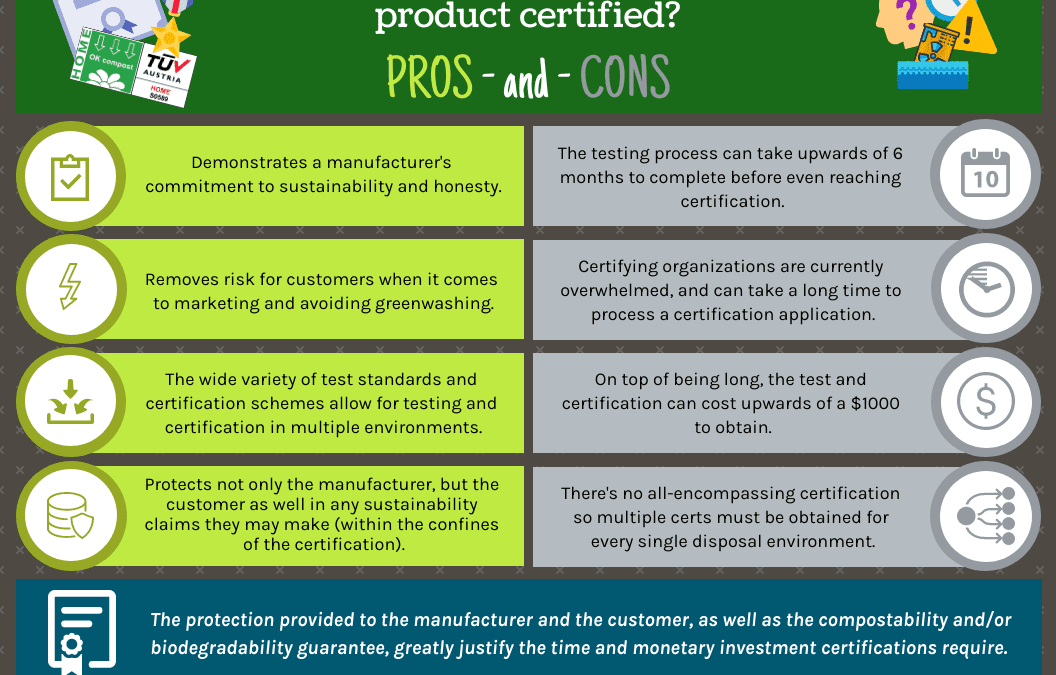
Pros & Cons of Certifications
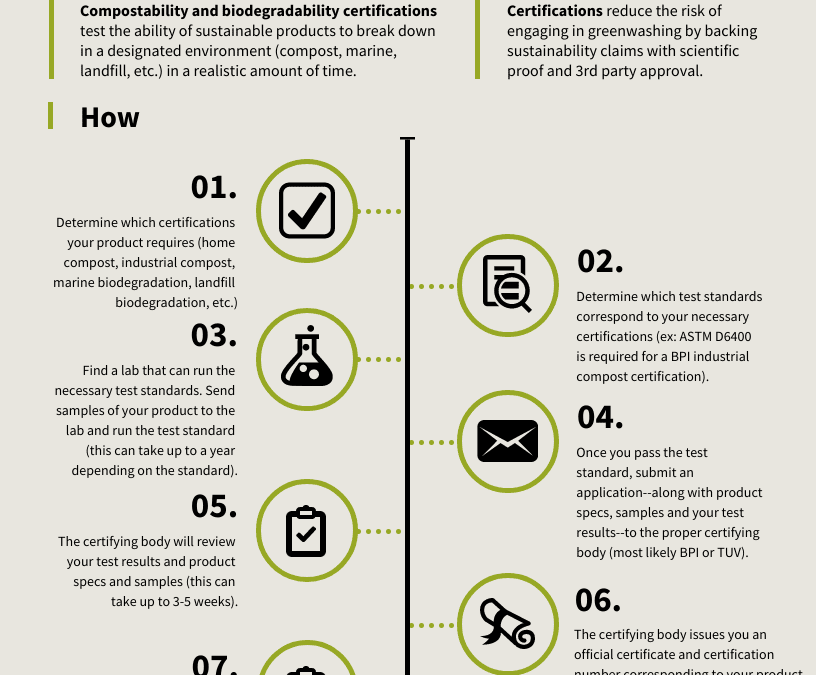
Steps to Certify Compostable Products
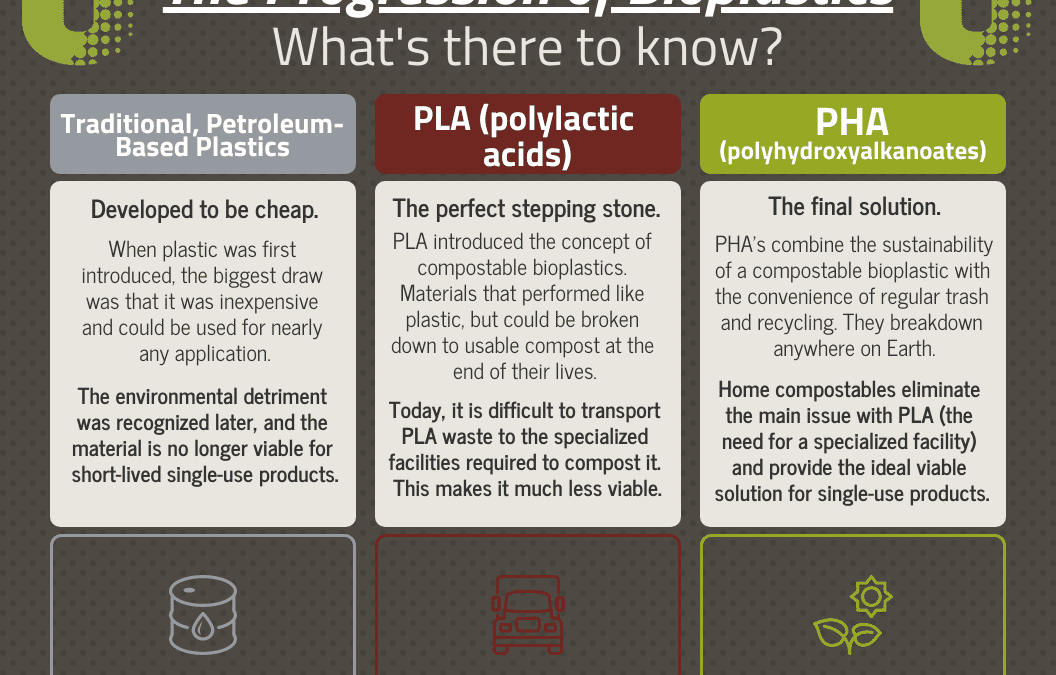
Plastics & Bioplastics History Stepping Stones
